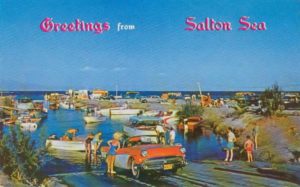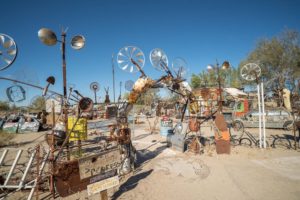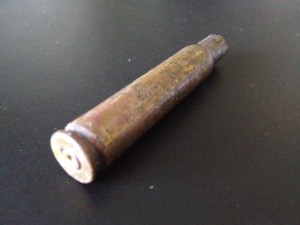by Bob Sparrow
Over this past weekend, while most people in southern California were preparing their homes and yards for the arrival of Hurricane Hilary, we, Mark & Kathy Johnson, Bob & Jeanne Pacelli and Linda & I, headed to San Diego to celebrate the 50th wedding anniversary of the Johnsons, who had rented a beach-front home on Mission Bay. We were heading right into what was projected to be the teeth of the storm.
Hilary, at the time, was rated a Category 3 hurricane; I looked up the definition:
Winds up to 129 mph! Devastating damage will occur: well-built framed homes may incur major damage or removal of roof, decking and gable ends. Many trees will be snapped or uprooted, blocking numerous roads.
The last time a hurricane of any category hit California was in 1939! Undaunted, we headed down Interstate 5 to San Diego on Saturday morning and noticed that the freeway was packed . . . going the other way, out of San Diego. We were clearly going ‘up’ the ‘down’ staircase? We wondered, is this a smart move? We concluded, “Ahhh, we’ll be fine.”
Before we left home, we made sure all of our outside furniture/umbrellas were secured or put away. We did the same at the Mission Bay home on Saturday evening. We were preparing for the worst, which we were told by local meteorologists that it would be Sunday afternoon through Sunday evening. By the time we arrived at the beautiful bay-side home, Hilary had been down-graded to a Category 2 hurricane, meaning winds up to 110 miles per hours – still significant!
Once there, we got more news, Hilary had been further downgraded to a Category 1 hurricane, and perhaps just a ‘Tropical Storm’ (winds 65 mph). It was actually fairly balmy as we sat on our patio and watched volleyball and other various activities on the beach.
We could not have had a better place to watch the storm, in fact, once we got there and parked our car, we never got back into it until four days later when it was time to drive home. Aside from a great pontoon boat ride, we had two dinners at the Oceana restaurant at the Catamaran Hotel, which was on the beach about 100 yards from our house.
We were getting a light rain most of the day along with mild winds, but nothing extraordinary – we kept waiting for Hilary to hit. She did finally hit, but it was more of a playful slap than a hit. Oddly enough, we were disappointed that we weren’t going to experience a once-in-a-generation hurricane/tropical storm in southern California. As it turnd out, the most ‘catastrophic’ thing that happened was our power went out for an hour or so and we were forced to use a flashlight and candles to play some games at the house until the power came back on. As it turns out, the deserts and the mountains got hit much worse than any of our coastal cities. Rain is, indeed, unusual in southern California in August, and the Tropical Storm did cause some major flooding the desert and mountain areas, but it just seemed a little anti-climatic to us on the San Diego coast after all the hype.
As it turned out the closest we got to a hurricane was the one I ordered at the Oceana bar.

























